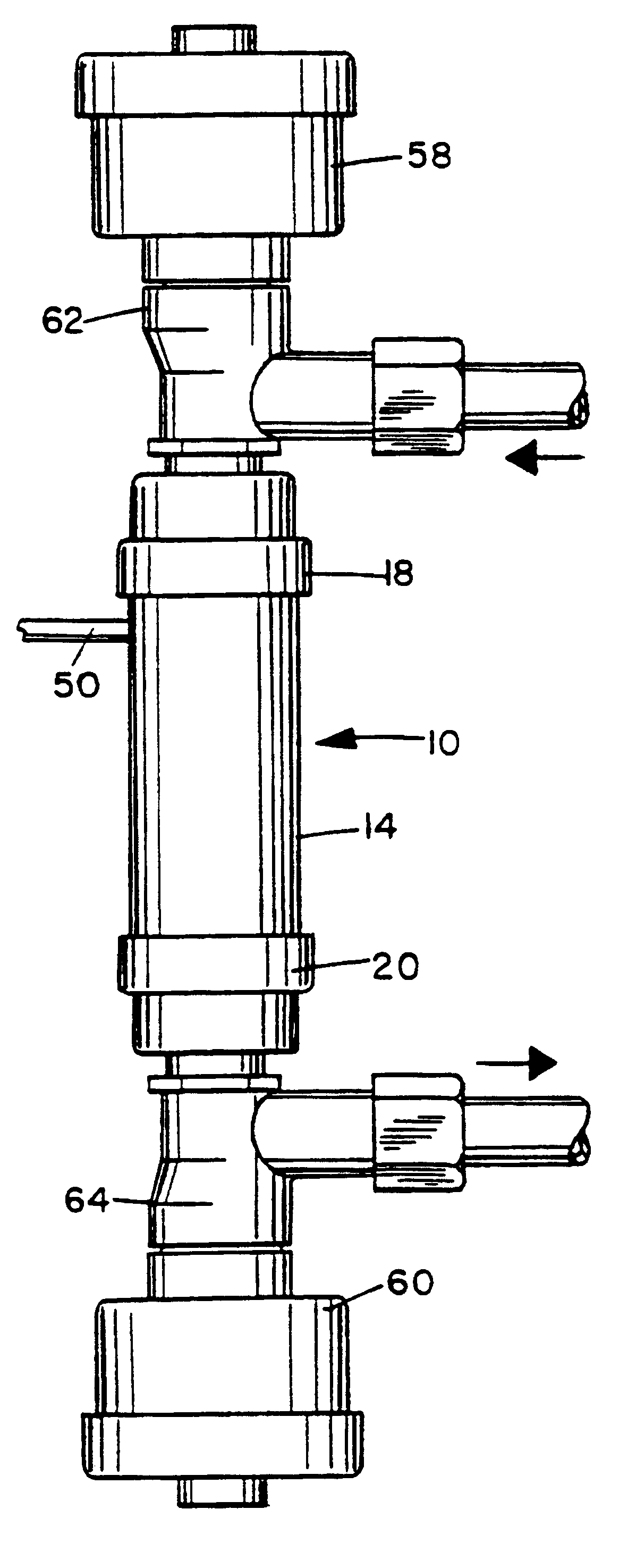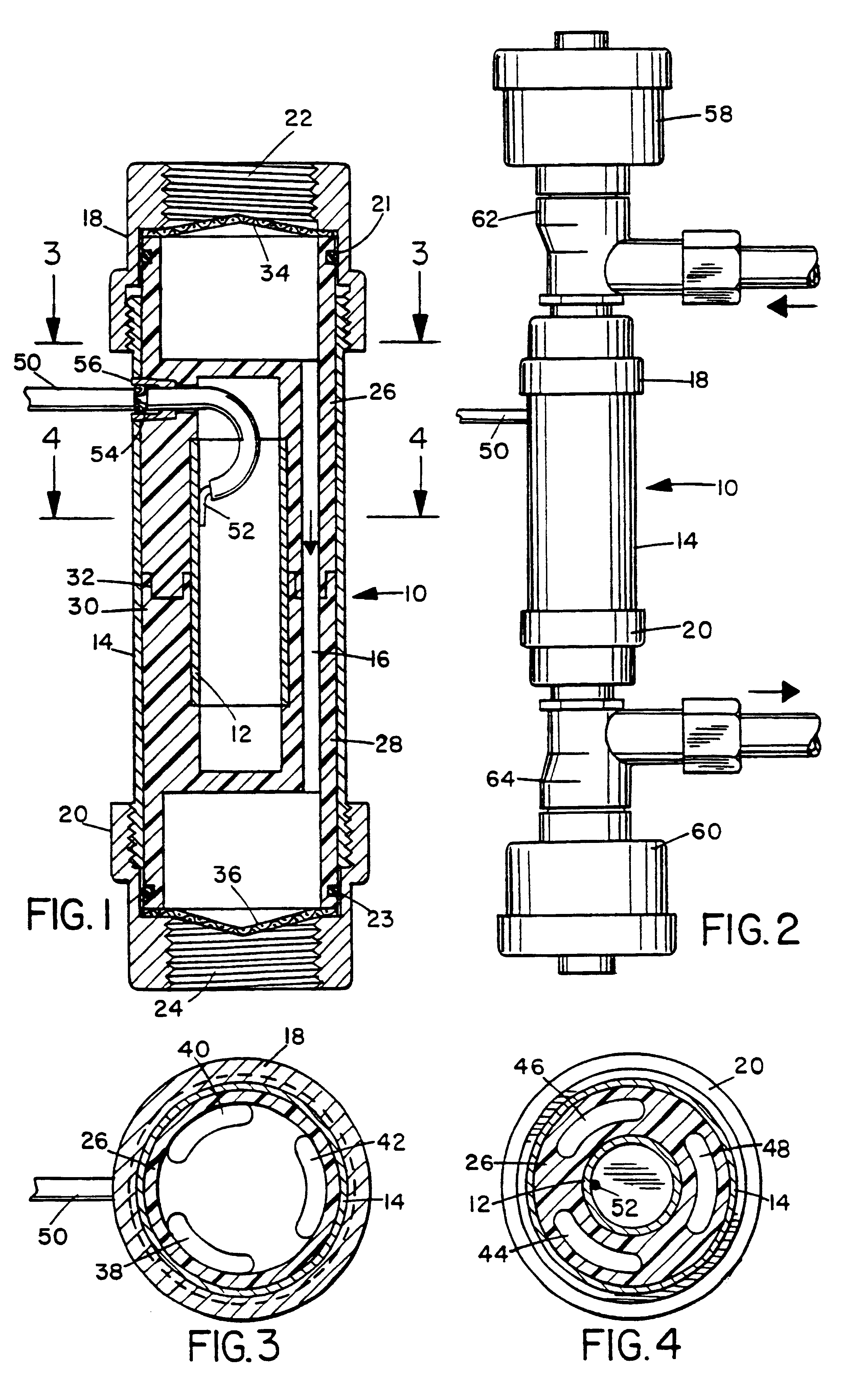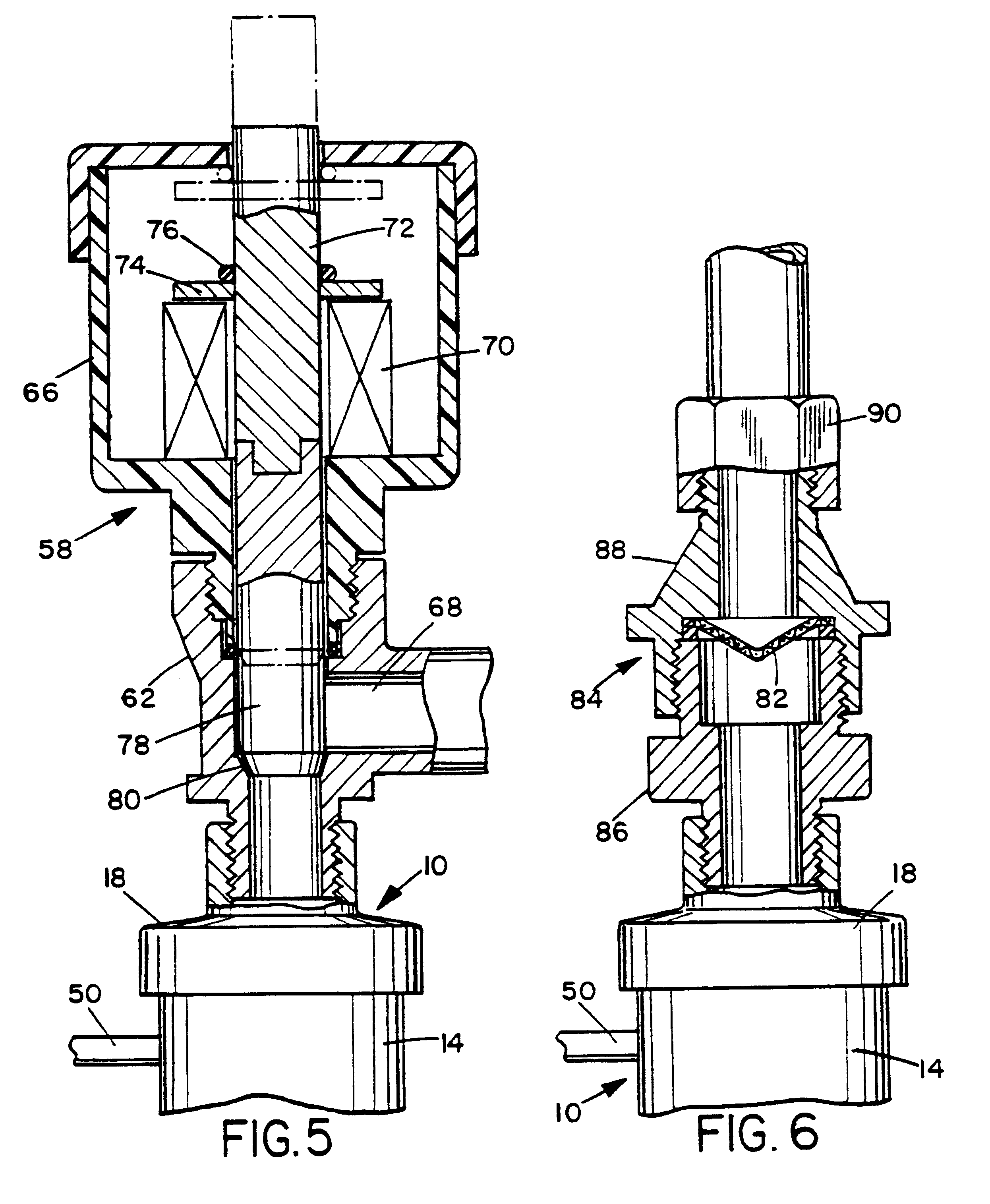Volume charge density measuring system
a density measurement and volume charge technology, applied in the direction of resistance/reactance/impedence, measurement devices, instruments, etc., can solve the problem of not being able to consistently measure ion concentrations in water below a few parts per million, for exampl
- Summary
- Abstract
- Description
- Claims
- Application Information
AI Technical Summary
Benefits of technology
Problems solved by technology
Method used
Image
Examples
Embodiment Construction
As illustrated in FIGS. 1-4, a capacitive sensor 10 includes an elongated, generally tubular inner conductor 12 and an elongated, generally tubular outer conductor 14 that are coaxially or concentrically mounted with respect to one another. Conductors 12 and 14 are radially spaced from one another, thereby defining an elongated annular chamber 16. Outer conductor 14 includes two conductive endpieces 18 and 20, one threadably attached to each end of sensor 10. O-rings 21 and 23 seal endpieces 18 and 20, respectively, against leakage. Endpieces 18 and 20 have sensor inlet and outlet openings 22 and 24, respectively. As more fully described below, sensor 10 may be used to measure the volume charge density of a fluid, i.e., a liquid or gas in chamber 16, which may flow into sensor inlet opening 22 and out of sensor outlet opening 24.
Two body portions 26 and 28 made of a non-conductive material are disposed at opposite ends of sensor 10. Body portion 26 is fit within one end of outer con...
PUM
 Login to View More
Login to View More Abstract
Description
Claims
Application Information
 Login to View More
Login to View More - R&D
- Intellectual Property
- Life Sciences
- Materials
- Tech Scout
- Unparalleled Data Quality
- Higher Quality Content
- 60% Fewer Hallucinations
Browse by: Latest US Patents, China's latest patents, Technical Efficacy Thesaurus, Application Domain, Technology Topic, Popular Technical Reports.
© 2025 PatSnap. All rights reserved.Legal|Privacy policy|Modern Slavery Act Transparency Statement|Sitemap|About US| Contact US: help@patsnap.com



